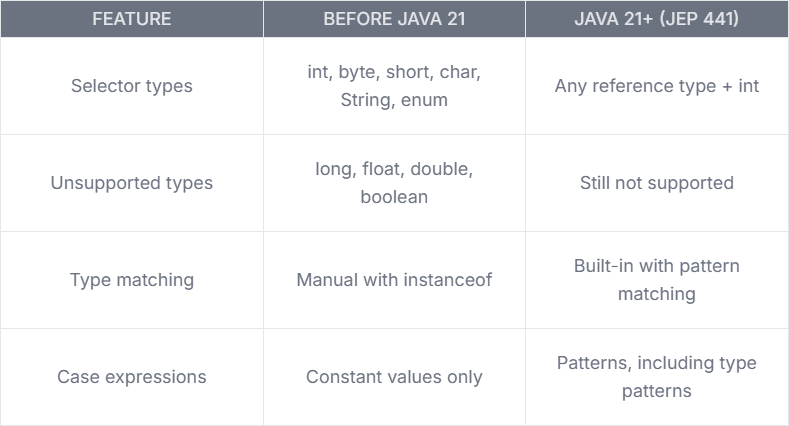
🗼 Pattern Matching for switch Expressions
– With Parisian Flair
A switch statement in Java directs control flow based on the value of a selector expression. In earlier versions of Java, the selector expression had to be of certain types — such as int, short, byte, char, String, or an enum constant. Notably, types like long, float, double, and boolean were not and are still not permitted in a switch.
🚀 What's New?
With the introduction of pattern matching for switch (as detailed in JEP 441), Java now allows:
🟣 Selector expressions of any reference type or int
🟣 case labels that use patterns, including type patterns
This enhances flexibility and makes code more concise, especially when working with type hierarchies.
⚠️ Still not allowed as selector expressions: long, float, double, boolean
🏛️ Example with Paris Monuments
Let’s model some famous Parisian landmarks:
🧓 Before Java 21: Verbose instanceof
Traditionally, if you wanted to perform actions based on the type of Monument, you'd use instanceof checks:
✨ Java 21+ Pattern Matching with switch Expression
Let’s refactor the same logic using a pattern matching switch expression:
🧭 Same with a switch Statement
You can also use pattern matching in a classic switch statement format:
📌 Summary

Java is evolving toward a more expressive and safer language, and this pattern matching feature is a major step—ideal even for expressing the grandeur of monuments like the Eiffel Tower or the Louvre.
